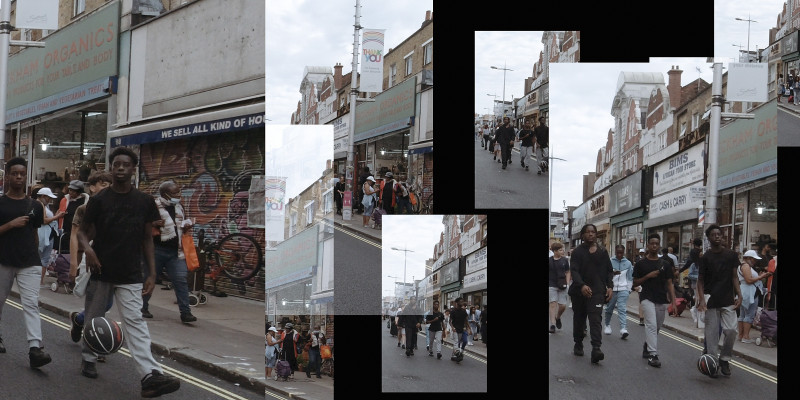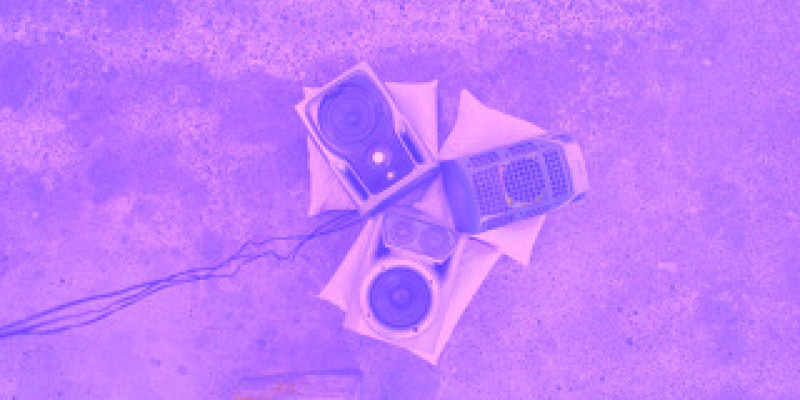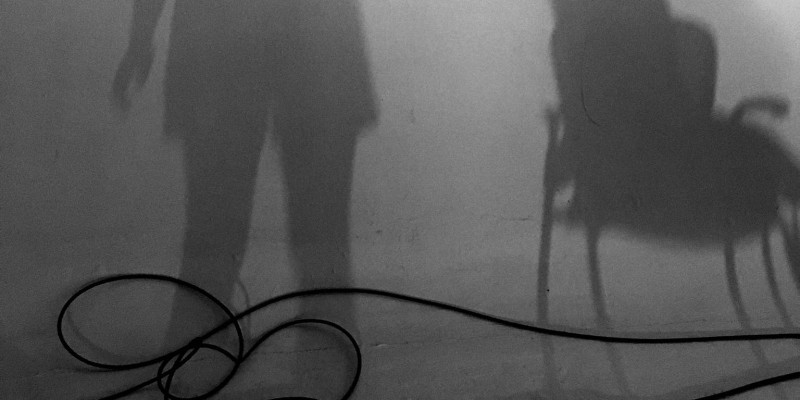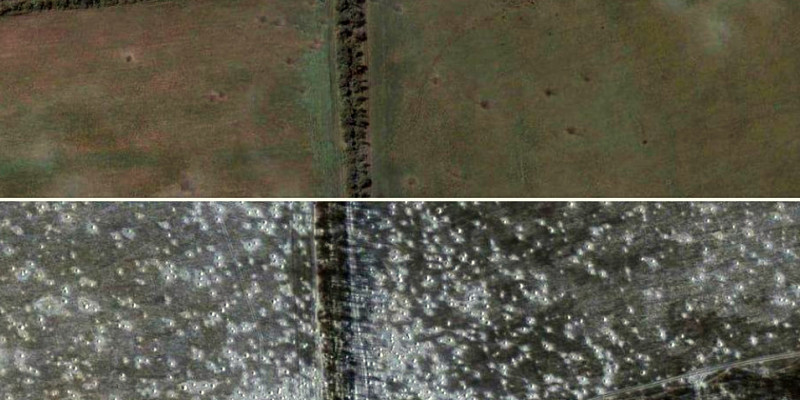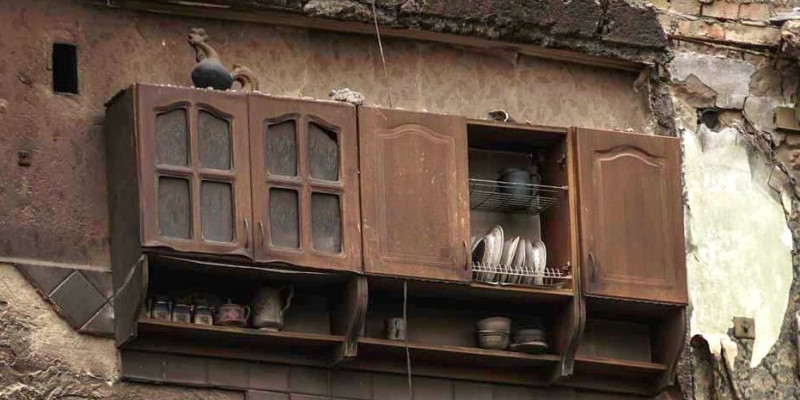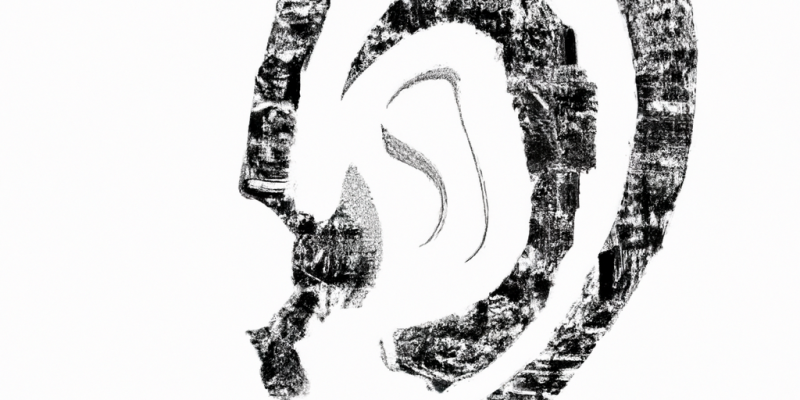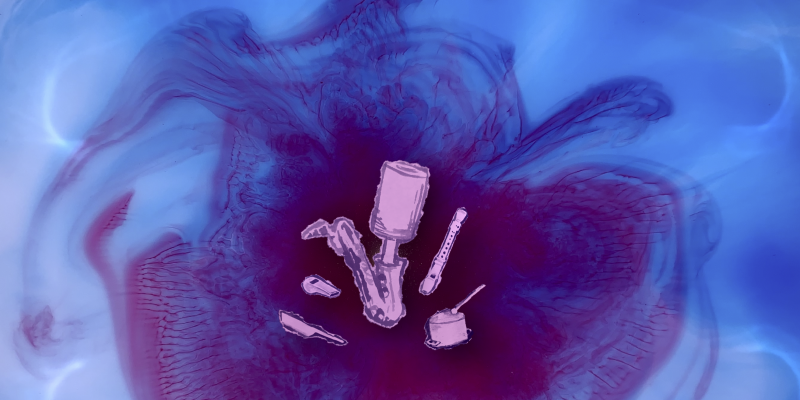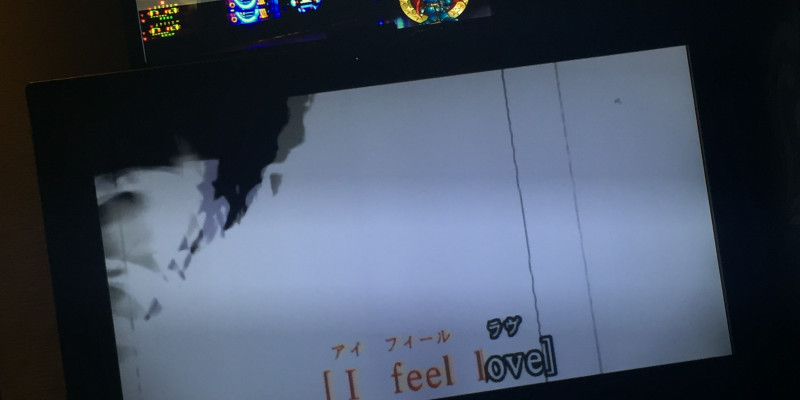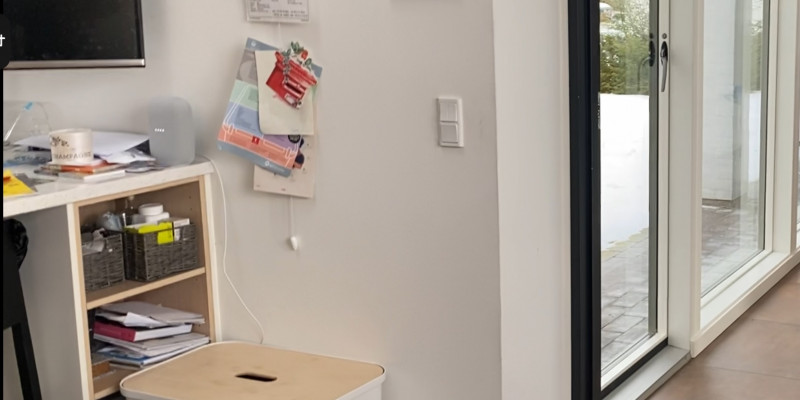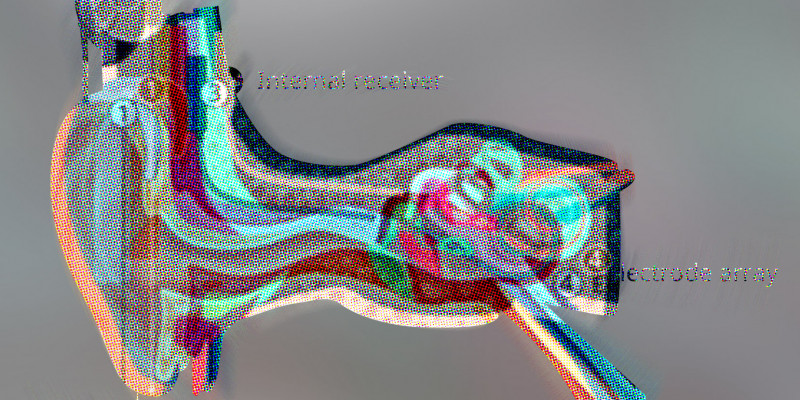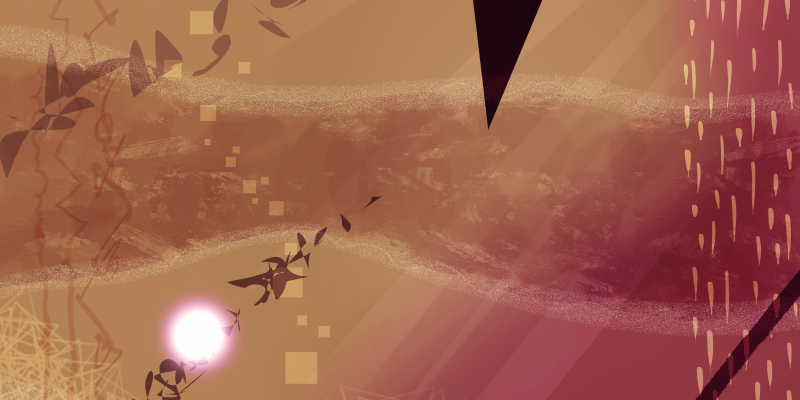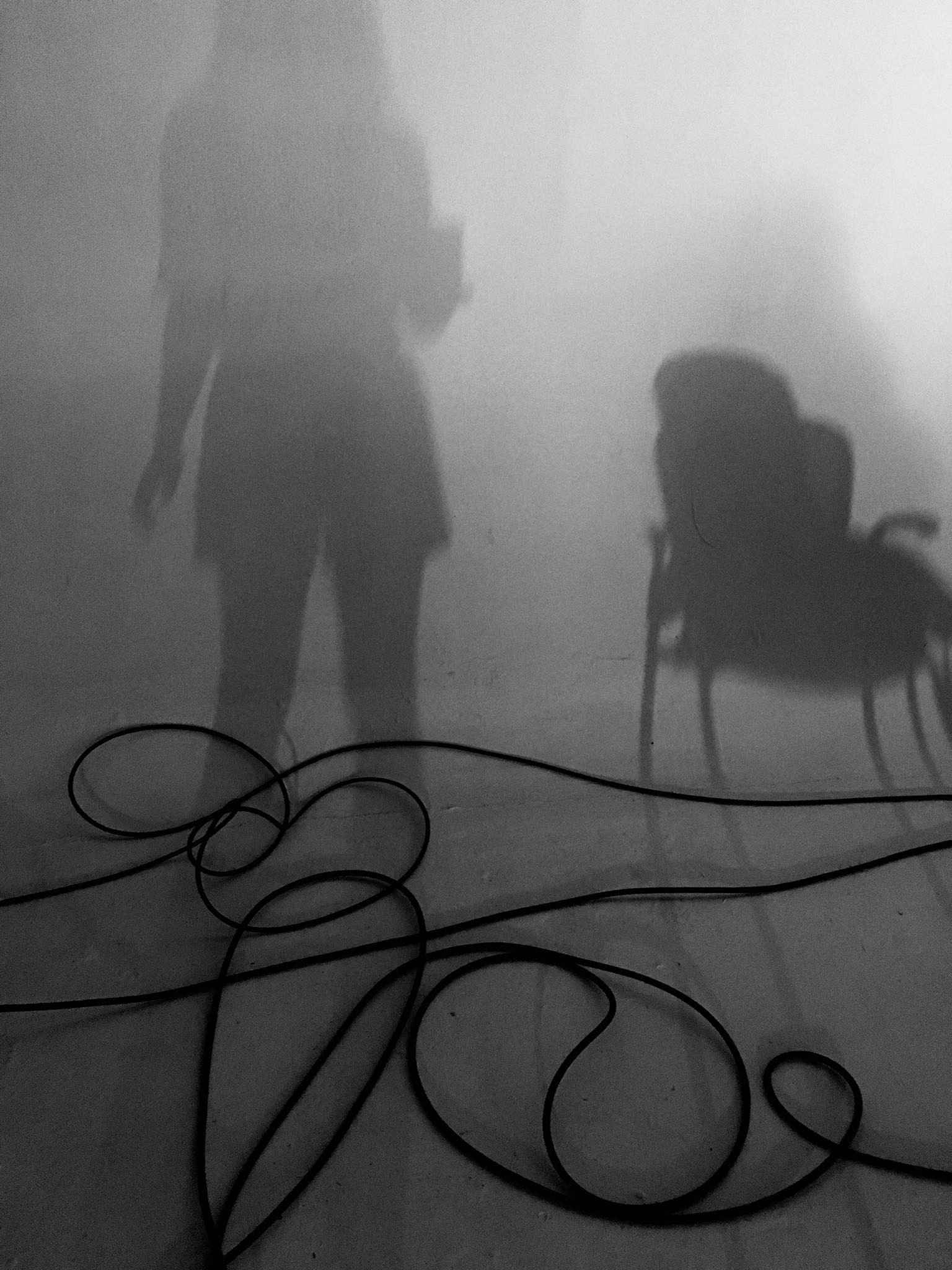
The human body as a space defining element of sound art
Abstract
This article researches the role of the Human body in the production of sound art. It focuses on the spatial path between body and sound in the exhibition space of sound art. This path is described by Barry Truax (1999) as the auditory channel. By examining the characteristics of the auditory channel, this paper asks how does the auditory channel produce a social event and affect navigation and orientation? How is it affected by the cultural context and the presence of the listeners? How does it create a private space through the use of technology? How does it contribute to the body’s expansion in sound spatiality and vice versa? This research is framed by artistic examples and by theoretical and conceptual resources, such as the work of Henri Lefebvre, Seth Kim-Cohen, Stuart Hall, Jean-Luc Nancy, Barry Blesser and Linda Salter, Maurice Merleau-Ponty, and Brandon Labelle. From an aural perspective, the essay considers sound art as a public process, in which the visitor becomes, in Lefebvre's terms, a living body, simultaneously subject and object of the artwork.
Introduction
The present research focuses on the human body as a ‘space-defining’ element of sound art during its presentation in the exhibition space. The human body interacts with, interprets and understands sound space through hearing and listening and through the body’s other senses. Hearing and listening bring us into contact with the world and help us understand our place in it, producing a relational experience (Labelle, 2012). The experience of acoustic phenomena, through the spatial characteristics of sound, implies a process of exchange and interaction with objects, bodies, material and immaterial elements of the environment. This research investigates such sonic processes as whole. The practices by which humans engage and interact with the sound space lead to a specific experience and perception of space, what Brandon Labelle (2012) calls »acoustic spatiality«. A structural component of acoustic spatiality is the auditory channel. The auditory channel is the path that connects humans with a sonic event and transmits messages and sonic information (Truax, 1999). In order to define the experiential attributes of space through sound Barry Blesser and Linda Salter use the auditory channel as »the connection between a sonic event and a listener« (2007, p.22). The auditory channel expresses one's communication and spatial connection with the sound that produces and forms the acoustic space. It demonstrates the dynamic engagement of the visitor with the acoustic space of the artwork. The listener can be connected with multiple auditory channels according to the sonic events that occur in a specific moment. The auditory channel that will prevail depends on the distance between the listener and the sound event, the sonic properties of the channel, for example loudness, listeners’ attention and sociocultural background and the presence of other channels.
In the theory of the production of space, the production process and the product are interwined (Lefebvre, 1991, p. 37). As far as the sound space is concerned, the production of sound and listening are two sides of the same coin and not distinct elements (Vrakatseli, 2019). For example, the acoustics of space as described in physics and the audible experience of the acoustics of space have to be mutually considered. As such, the sonic space is interconnected with the human body and acoustic spatiality and the auditory channel forms the space of sound art.
The ways in which the spatial relationship between the visitor and sound art is articulated are analyzed in this research through the examples of sound artworks presented mainly in Greece as well as through the study of the auditory channel in the experience of the acoustic space. The paper investigates how the human body interacts with sound and influences its form, blurring the lines between subject and object. It takes into account Kim-Cohen's categories of self-referential sound and sounds’ inner qualities (»sound in itself«) and external-referential sound (»sound out of itself«), which cultivates the connection of sound with other spaces such as the social and the political (2009: 13). A given sound may be characterized by both of the above-mentioned qualities making it “a transdisciplinary object that is at once and irreducibly natural, social, and subjective in character” (Campbell, 2020). Without producing any dualism, such as nature-culture, the distinction between sound in itself and sound out of itself is made in order to more deeply understand the qualities of sound, the listening capacities and how the interaction between body and sound unfolds.
The curation and presentation of sound art in the exhibition space play a significant role in whether the visitor will pay emphasis on the internal or the external characteristics of sound. For example, the experience of sonic materiality is different when the sound is loud and dynamic, overwhelming the exhibition space versus when it is presented on headphones. On the basis of the above, the characteristics of the auditory channel will be developed in order to understand the role of the visitor in sonic art spaces and the production of listening knowledge.
The auditory channel in the exhibition space
A fundamental aspect in the production of sound art by the human body is the auditory channel. At every point of the material and morphological space, the visitors develop a spatial form of communication between themselves and the audible sounds. This interactive, non-linear relationship that arises between the sonic spaces of the artworks and the listener is the auditory channel. Artist and curator Stephen Vitiello refers to this relationship between visitor, installation art and the space. Sound modification, according to Vitiello, is based on the position of the listeners; it is affected by their movement, and by their constantly changing perception, creating a temporal feature in the exhibition space (n.d., cited in Penwarden, 2002).
Various competitive auditory channels are generated in the exhibition space comprising several listeners and multiple sonic artworks. For example, when listeners are inside the sound spaces of two artworks, they develop lines of communication between these artworks. In this case the two auditory channels compete. If the visitors turn their attention to the sound of an artwork, then that channel will prevail over the other. The way humans perceive sound, their personal experiences and their sociocultural environment affect their attention to sound. Although visitors may be at a close distance with each other in the gallery, they can focus on different sound artworks. Responsible for the aforementioned competition is also the curator, who is called upon to perceive and shape this relationship in order to determine the »target« sound at each given point, i.e., the sound that he/she wishes to be heard most. That is to say, the auditory channel and its spatial characteristics depend on the listener and the way sound artworks are exhibited in the space.
The acoustical experience is shaped by the material and morphological dimensions of space. The interaction of sound with space affects the way humans experience the sound (Labelle, 2006, p. 149). Through sound, and specifically through hearing, humans have the inner ability to sense the characteristics of the material and morphological dimensions of space and decode them; through the sound of footsteps, for example, humans can understand whether the floor is wooden or marble. Through echo and reflection humans can perceive the volume of a space and are able to ‘hear’ a wall (Blesser & Salter, 2007 pp. 2).
The auditory channel in the exhibition space of sound art forms a spatial relationship between the visitor and the sound. It has a fluid form with the following characteristics—the first and fourth are addressed by Blesser & Salter when they describe aural spatiality (2007, p. 11), the influence of social behavior and the orientation and navigation in space, as:
a) a social event that affects social behavior, b) creating private space through technology, c) the presence of listeners, d) orientation and navigation in space, e) personal interpretations by the listener, f) highlighting the sensory qualities of sound.
A Social Event that Affects Social Behavior
In the exhibition of sound art a collective space emerges due to the property of sound to connect different bodies. Visitors are immersed in the sonic space and share a common ability to interact with sound and other visitors sonically. In this context, sound produces a community full of relational experiences in which collective consciousness is cultivated. Sound travels and diffuses in space as an invisible wave that joins different places. It twists, it touches surfaces, it vibrates bodies, it approaches sites that sight cannot reach, and escapes from closed spaces and boundaries. As a flow it is characterized by plasticity, it moves in multiple directions, taking different formations and creating planes that are not based on Cartesian logic and the geometry that described planes and flat surfaces.
The sonic space has different spatial characteristics from the visually designed space, changing the concepts of boundaries and geographical proximity. A typical example is the artwork The Way Earthly Things Are Going (2017) by Emeka Ogboh, which was presented at the Athens Conservatory in 2017 as part of the Documenta 14 exhibition. A multi-channel sound installation with a LED screen projecting real-time stock market indices was located in a large amphitheater. In order to reach its center, one had to descend several steps and cover a relatively long distance. The voices of a female group that sing a traditional Greek polyphonic song about human fate are played through multiple loudspeakers. However, the sound was heard throughout the room and beyond it, and the listeners shared the same sonic spatiality. This spatiality is called the »acoustic arena«; within its range all visitors acquire the common ability to hear a sound event (Blesser & Salter, 2007, p. 22). The polyphonic audio installation created a holistic experience and visitors felt immersed in the projected sound whether in the room or outside.
The moment the visitors listen to an artwork they are automatically integrated into the sound space, and share the experience of sound with other visitors who are also integrated into the same space. As a result, sound does not coincide with the public and private spheres of visual space. Sound, by nature, is considered not so much a private affair but a public event (Labelle, 2006, p.251). Due to its multidirectionality, multiple auditory channels are created, the number of which is analogous to the number of visitors in the exhibition space. Through sounds’ multiple presence in the common space, sound becomes a common good, that produces public space, i.e. everyone has access to it and can interact with it or with other people sonically. Thus, the presence and participation of visitors in the common space of sound constitutes an exit from their individuality. Sound, in that case, functions as a common good, as a collective event (Dirty Ear Forum, 2014) that develops a collective consciousness and unites different bodies. Consequently, through their presence and their sense of listening, listeners of sound art participate in a public event and become part of a community. Sound forms different perceptions of what is common and what is individual. It is not individual but it has relational characteristics, and it is produced through the presence and action of other people. Through sound and its natural ability to connect bodies, one comes into contact with other people whether one intends to or not. Therefore, sound is, by nature, characterized by participation and sharing (Nancy, 2007, pp. 41-2). According to the above views, sound art is public because it defines a common event which is constantly shaped by the agents involved each time.
Regarding the exhibition space, sound is the product of a social action and takes place within a social context. A multiplicity of acoustical perspectives is created (Labelle, 2006, p. x) and the social act is produced within the exhibition space. The material form of sound emerges as a result of the material mediation of social events, physical movements, and audience flow. Michael Asher is an artist who uses the context of space as content. For example, at the exhibition that was held in 1974 at the Claire Copley Gallery in Los Angeles, he removed the interior walls of the gallery space so that the social actions taking place in the offices of the art gallery could be seen and heard. As such the social context comes to the foreground. The visitor feels an expanded space since the exhibition space is connected to the social space. The soundscape of the exhibition space and that of social actions are unified. Hayes (2017) adopts the expanded notion of ‘performance ecologies’ that incorporate social act in musical performance in order to describe the interaction of the performer, the audience and the spatial and the social environment. Consequently, a new philosophy of aesthetics is produced that has to do with exhibition space. In this case, exhibition space turns into a ‘live’ social event. The way which the presentation of sound in the exhibition space outlines the listener's social relations, social behavior, and privacy will be analyzed in the following sector.
Creating Private Space Through Technology
A direct and experiential perception of sound is developed through the use of headphones in the exhibition space. Visitors can create a private space, a personalized sonic path that cultivates interiority. The social behavior is characterized by acoustic privacy as in the case of using iPods and personal portable MP3 players in the outdoor space. In this case, a form of solitude is created, and the users follow their own personal paths within a shared space (Bull, 2005). Headphones, in this way, create an interiority: "the spatial possibility of »inhead« acoustics" (Stankievech, 2007) resembling the way the stethoscope is used by the doctors (Sterne, 2003). Users feel that sound derives from their inner body (Panopoulos, 2010) highlighting the boundaries of the private space.
People tend to change their social behavior depending on the characteristics of the auditory space (Blesser & Salter, 2007, p. 34, Fluegge, 2011). For example, a large space, i.e., a large acoustic arena, with intense sound helps the visitor to speak loudly. On the other hand, it is a social norm for people to be silent in museums and in the white cube creating a hierarchical relationship. This form of power can also occur in the external social space, as in the case of prisons either with loudness or with silence (Fluegge, 2011). In the exhibition space these power relations are abolished with sound. Due to the presence of sound the visitors participate in the acoustic arena and are able to speak; or through the headphones, they can change the volume of the artwork and they can create a private space. In this way the visitor is empowered and takes an active role in the exhibition space.
The use of headphones provides the listener with a unique listening experience that involves the attention and not aesthetic parameters. It is like the curator calls visitors to focus on the specific sound and spend more time on the artwork. In the exhibition space the sound artwork seems to be detached from the overall space and integrated into a new context characterized by acoustic privacy and direct experiential perception. The headphones can have the qualities of a wall, reinforcing personal experience, solitude, and detachment from social cohesion and the common social space of action. With headphones the visitor's auditory perception and interaction with the outside world is isolated, making the sound artwork produce a personalized acoustic environment characterized by intimacy and privacy. An inner space is created within the listener's body and head detaching the visitors from the environment and the common sound space. This shows that headphones change the way people collaborate and behave within a shared auditory space, i.e. the sound space is produced by the overall artworks.
The visitors, moving or not within the space, follow their own sound paths that are not shared with anyone else simultaneously in a common environment. However, a characteristic of headphones is that they are easy to manage as, for example, the users can lower the volume to hear the sounds of the entire acoustic arena. Thus, they have an active role in changing the boundaries of the private acoustic space. In Janet Cardiff and George Miller's audio walks users wear headphones, and a pre-recorded voice is heard giving them instructions. The headphones push the users towards a new form of perception, a hybrid state between what they hear through the headphones and the outside world (Stankievech, 2007). The use of headphones creates multiple dynamics and gives an active role and a kinesthetic experience to the listener, which could expand the private acoustic space. This active role of the listener does not depend only on technology but also on the presence of the human body.
The Presence of Listeners
The sound space is affected by what is inside it, what is integrated into it. A characteristic example is the wall that acts as a means of refraction and reverberation of sound. Similarly, the human body leaves its own traces in the sound space as a reverberant factor of the sonic wave. The presence of the listeners, their arrangement and their movement as expressed through the auditory channel affect the spatial quality of the sound environment. The presence of human bodies affects the production and reflection of sound (Labelle, 2006, p. x), making the visitors an integral part of the sonic exhibition. Another typical example is that sound in a space full of human bodies will be heard at a lower volume than when the space is empty, redefining the relationship between the artwork, the exhibition space, and the human body. As has been observed, for example, at the opening of exhibitions of sound artworks, due to the large number of visitors, the speech mixes with and masks the sounds of the artworks, so that the latter are not »heard«. Consequently, sound space is open to human presence as it unfolds. Sound artwork and visitors form a unified whole that changes significantly according to the number and characteristics of the people that produce it, rendering this unified whole ephemeral, flexible, and open to multiple changes.
David Cunningham's series of installations The Listening Room incorporates the listener into the production of acoustic space. Visitors are invited to listen in real time to the highly reverberant room they are embedded in. The presence of people, humidity, ambient sound etc. can affect the air and make acoustic changes. With the following system, the resonant frequencies of the architectural space were amplified and became audible and interactive. A microphone is connected to an amplifier, a noise gate and a loudspeaker. The noise gate has a threshold that turns the sound on or off according to the volume of sound. When the microphone and loudspeaker start giving feedback, the noise gate stops the sound. The sound from the feedback reverberates in space until it falls below the threshold, and the process starts again. In this way the artist rendered the space active, and allowed visitors to hear the results of their body's interaction with the sound – for example, in some points visitors produced long bass pulses; or in a rather empty gallery they can hear the effect of interrupting the sound with their body (Cunningham, 2003). As illustrated in this artwork listening and sound space are intertwined. The principle of sharing the same space with the artwork is crucial in the philosophy of sound art (Voegelin, 2010, p. xii). Similarly, the site-responsive sound art performances developed by Hayes (2017) call visitors to experience their presence and participation. Visitors of a sound art exhibition take part in a participatory process which is not always conscious.
The mutual formation of the sound space of the artwork and the visitor’s auditory channel is based on the direct relationship of body and space. This is reflected on the way the body deploys itself in space, occupies it (Lefebvre, 1991, p. 170) and produces space since it »is not primarily in space, it is of it« (Merleau-Ponty, 2005, p.171). Τhe artwork is not an autonomous entity formed only by the artist and presented with the help of the curator. Its characteristics depend on the presence of visitors who through their movement and presence structure the acoustic space and recreate it. This way, the listener – through the auditory channel – is a structural material of the artwork and experiences a »self-reflective awareness« (Labelle, 2006, p. 10) in the exhibition space. The visitors are the receivers of the artwork and without necessarily realizing it they shape its characteristics. In conclusion, the visitor becomes at the same time subject and object, what Lefebvre defines as a »living body« (1991, p. 107).
The visitors of a sound art exhibition are automatically located in the internal structure of the sound space and interact with it composing an indivisible whole. The volume of the interaction depends largely on the characteristics of the sound, such as density, loudness, source distance and, of course, how these are shaped by the existing space. This is because sound functions as a means of communication that carries information about the space in which it is presented (LaBelle, 2009, p.16). The body uses sound to sense the place in which it is situated. The body itself acquires a spatial dimension, it composes it, but is also composed and redefined by it. The body-sound interaction will be further analyzed regarding movement, orientation and navigation in sound art spaces.
Orientation and Navigation in Space
By listening to space, humans cultivate their spatial awareness and the ability to orient and navigate in space. They identify the acoustical attributes of space and, by extension, its multidimensional characteristics. They can hear a sound coming behind them or above them which enables them to conceive more than 180 degrees of the visual field orienting themselves in three dimensions. Humans can decode the space and can place objects in it sonically (Blesser & Salter, 2007, McLuhan and Carpenter, 1960, Tuan, 1977). They can experience the directionality of sound and recognize the direction the sound is coming from, regardless of the identification of the sound source and the syncopation of the visual and the auditory (Ihde, 2007, p. 76). Hearing is a sense that motivates humans to move, explore and orient themselves (Schellinx, 2012, Clarke cited in Findlay-Walsh, 2019).
Hearing expands or replaces vision as listeners can detect the objects in space through sound and choose which path to follow. The ability of the blind to orientate themselves in space by using sounds is explored in Darren Copeland's radiophonic tape composition Life Unseen, which focuses on issues relating to blindness in the contemporary world. Two »scenes« in the first part, Awareness of Space and Recharting the Senses, refer to the heightened senses of the blind, especially to hearing, and call into question their inability to orientate themselves in space (Copeland, 1997/9).
In the exhibition space, the visually shaped space and the acoustic space shape the visitor’s navigation ability and spatial awareness on a case-by-case basis. The fact that sound can help the visitors understand space, and their reaction to this are presented in the multimedia artwork Sound Journeys (2016) by the American studio The Principals in collaboration with one of the world's most famous field recording artists, Chris Watson. In this work, visitors move across visual corridors in three different sound zones that are full of nature sounds – forest, canyon and sea – and interact with them passively, directly or indirectly. For example, visitors’ voices echo in the canyon zone, and bird sounds guide them in the forest zone, raising questions such as whether the forest is defined by the trees or by the sounds of the birds in it (The Principals, 2017).
Kinesthesia in the exhibition space is formed by the body-sound interaction as it is designed by artist/curator of sound art. The sound exhibition With Your Consent was held by the group Akoo-o at the independent cultural project Taf/the Art foundation in Athens in April 2016. In this exhibition multiple sound installations dealt with surveillance practices. In this context, a qualitative interview was conducted with five visitors who were asked, among other things, about the way they moved in the exhibition space, and if sound affected their navigation. The gallery space was white and empty, and visitors could only see speakers and a microphone. However, there was no clear visually-marked route, as the exhibition was designed according to sound production and movement detection. Inside the exhibition space, the visitors came into contact with sounds that they produced themselves. This was achieved both intentionally, as when they spoke into the microphone, and unintentionally, through mechanisms for detecting the visitors’ position and movement—through cameras and piezoelectric microphones placed on the floor. It is noteworthy that, when the visitors were asked if they moved according to sound, they answered that they did so in the cases where they interacted with sound through technological media. Upon entering the exhibition, the visitor hearing the sounds or seeing the speakers and the microphone had the tendency to cross the room. Microphones were visual elements that acted as a call to the listener to produce or listen to sound. Points, routes, and directions of the visually shaped space affect the way the artwork is perceived. Therefore, visitors moved to hear their own movement or footsteps, and interacted through them with the sound. Visitors reacted to sound rhythmically and expressively. Orientation and movement in space are also based on cultural practices—habits or habitus, as mentioned by Bourdieu (1977: 86). Whether the visitor will follow a visual or a sonic path depends on the exhibition’s design but is also a matter of personal choice. What matters is neither direction nor orientation in sound space, but the given position of the body and its interaction with the sound at each given moment.
The auditory channel can affect the direction and navigation in space, the movement and the reactions of the visitors. The moving body in the acoustic space is not a passive receiver. Through directions and embodied reactions such as the turning of the head, the body »produces itself in space and it also produces that space« (Lefebvre, 1991, p. 170). Thus, the body becomes a ‘kinesthetic learner’ (Hughes, 2010, p. 43). Objects of orientation are placed in space according to spatial relations, and as such, the actions of the body have a spatial aspect. The body orientates itself towards the above objects cognitively or affectively in order to achieve a dynamic balance between itself and the environment (Norberg-Schulz, 1971, p. 9). The interaction of the visitors with the acoustic space that navigates and directs them gives a spatial dimension and a spatial understanding to the auditory channel and, by extension, to hearing, so that kinesthesia is shaped by the auditory channel.
Personal Interpretations by the Listener
By listening to sound art visitors actively participate in it. Visitors interpret and decode the sound artwork according to their experiences and sociocultural background. Thus, they end up producing their own meaning. The way the listeners choose to listen affects their spatial relationship with the artwork, defining the dominant auditory channel. The cocktail party effect has to do with the ways in which listening shapes the auditory channels of communication. Although listening is a multidimensional sensation by which we hear what is happening from all directions around us, humans have the ability to focus on one specific sound source regardless of the presence of other sources in the same space. The cocktail-party effect is the phenomenon that is related to our ability to distinguish a sound such as the human voice from other sounds with similar characteristics, and focus our attention on it (Bubaris, 2013, p. 48). A listener, therefore, ignores what is he/she considers to be useless information. More specifically, the listener can separate speech spatially from what he/she regards as noise. There are two ways that visitors focus on sound spatially based on the two types of listening as defined by Pauline Oliveros. Their focus has to do with the "reception angle" and how many auditory channels will be produced. One way is to focus on a sound and its detail, and the other is to take into account the environment and how it unfolds in 360 degrees (Oliveros, no date, cited in Cowley, 2003).
Hearing is a diverse sensory experience. John Drever coined the term »aural diversity« in order to describe the plurality of hearing. Sensorineural conditions, neurological differences, technology, social, cultural, geographical differences can affect the way humans hear (Hugill,2019). A non-cochlear artistic approach of sound, which does not focus on auditory perception, was introduced by Kim-Cohen in his book In the Blink of an Ear (2009). By referring to ‘sound out of itself’ he gives a representational quality to sound art, and places it in a semiotic context. Kim-Cohen was inspired by Marcel Duchamp who highlighted the non-retinal characteristics of visual arts, such as the political, social, conceptual. The visitors are invited to read an artwork by taking into account codes, representations, signs, relations and their own personal memory and experience (Kim-Cohen, 2009, p. xix). In this way the sonic process expands and includes the subjectivity of the visitor (Kim-Cohen, 2009, p. 107). For the author, art is a simultaneous production of the message and the code/language of its transmission (Kim-Cohen, 2009, p. xxiii - xxiv). The transmission is made with the sound produced by the sound artwork (code), which is transmitted to the visitors of the exhibition space (receivers). There is feedback between the artwork and the recipient that defines the cultural process (Papageorgiou, 2006). The feedback process is the auditory channel that is interpreted through listening. The auditory channel is produced according to the conditions that define any specific context.
A process of producing meaning using language, signs, images, objects etc. within a culture is representation. The production of meaning is related to the culture that is produced at a given place and time since common cultural codes are considered necessary (Hall, 1997). The way the meaning of representation is interpreted depends on the characteristics of its context, such as cultural, social, and historical conditions. In other words, context and production of meaning are interrelated and interact with each other. In this dialogue it is the visitors-interpreters who give meaning to the artwork and the space it refers to. The way members of a culture give meaning to objects depends on how they manage them, use them, what they feel about them or how they integrate them into their daily practices (Hall, 1997). A typical example is a task given to primary school students as part of a sound-art educational program that was hosted by the EMST Museum of Contemporary Art in Athens and was co-organized by the researcher. More specifically, students listened to the sound artwork Isfald by the Danish artist Jacob Kirkegaard. Without any analysis or reference to its content, students were invited to draw what they hear. The artwork presented recordings of the sounds of ice and melting glaciers in Greenland using hydrophones and vibration sensors. It is remarkable that all the children drew storms, rumbles and lightning, wondering why they were given these sounds. When the identity of the sounds was revealed, they reacted with surprise and excitement. Indeed, the sound of Kirkegaard's artwork did not differ much from the sound of a storm. This fact does not prove that the children were wrong, but as they were born and raised in a society and culture of southern Europe where ice and glaciers are almost non-existent, they could not associate the sound with them. Consequently, culture in terms of experiences and representations holds a very dynamic position in society. It determines the way members of a culture interpret sonic reality and the world.
Sound art opens to a wider conceptual, social, political context and it is redefined for each specific person in a given cultural context. Sound art has temporal and spatial dimensions and the artwork is formed from the relations that arise. Each artwork is subject to different and multiple interpretations depending on the given time and space, thus constituting a complex and flexible entity (Stocking, 1985, cited in Bounia, 2006). Meanings are not fixed but are therefore redefined because the context changes. Sound meaning always depends on its environment and to a great extent on the receiver who acquires an active participation.
Highlighting the Sensory Qualities of Sound
In Plato's Philebus, Socrates speaks about the single pure tones that are beautiful in themselves. This section will analyze how the auditory channel contributes to understanding the spatiality of the body in the context of sonic materiality—'sound in itself’. Without neglecting any sonic translation into signs, the emphasis is on the pure and »raw« relationship between the sound and the body, which in turn changes the boundaries of the given space. This section considers sonic ontology developed by Christopher Cox (2011) from a naturalist perspective that focuses on sound in accordance to »what it does, how it operates, what changes it effectuates«. This view, was criticized by feminist researchers who emphasize alternative means for the production of knowledge. Specifically, the feminist critics point out that Cox did not contextualize and situate sound in order to investigate how the sonic nature is specified (Thompson, 2017). In addition, the critics proposed re-negotiation of traditional dualisms such as subject-object and nature-culture by highlighting the role of embodiedness and situatedness in acoustic awareness (Goh, 2017). As noted above, this research adopts a transdisciplinary approach on sound and the auditory experience produced through an interaction of various agents, such as the wall or another human body.
The interactive expansion of the body in space is underlined by the work of the French philosopher Merleau-Ponty, who argues that through their bodies, humans communicate with the world and perceive their environment as an extension of themselves. Thus, humans perceive themselves in relation to the world. He addressed the spatiality of the senses, the absence of inner body and, by extension, the absence of boundaries between body and space. Man is not outside space and time but through the body he belongs to them (Merleau-Ponty, 2005, p.162). From an aural point of view, the above was highlighted in the sound artworks of Bernhard Leitner (Vrakatseli, 2021), who points out that "the boundaries of sound spaces can also go through the body" (Schulz, 2002). In this approach the body is seen as »the vehicle of being in the world« (Merleau-Ponty, 2005, p. 94), as a container that »is operating as a transducer« (Massumi, 2002, p.135), as a space that negotiates with the outside world and helps the subject to learn its possibilities. For Merleau-Ponty »we are in the world through our body. But by thus remaking contact with the body and with the world, we shall also rediscover ourself« (Merleau-Ponty, 2005, p. 239). Through this contact Merleau-Ponty remarked »I slip from the 'subjective' to Being« (1968, p. 218). Consequently, the body is the active medium that understands the components of the world and shapes the experience of Being.
This research would be incomplete without reference to the book Listening (2007) by Jean-Luc Nancy although there are difficulties connected with the accurate translation from the French. The philosopher analyzed listening not as based on understanding but on the form and sensory qualities of sound, focusing on sensation and subjectivity (Kane, 2012). He researched the mode of listening in reference to Schaeffer's term »écouter.« This mode of listening refers to sonority and the inherent elements of sound, such as tone, and not to any concept or representation. The author describes the sonorous as a form that is permanent, full of vibrations or undulations (Nancy, 2007, p. 2), and producing resonance. The resonance shares common features with the subject and the object, and has characteristics of continuous interaction, a relationship of sending away and returning (Kane, 2012).
From the perspective of the body, Nancy focused on listening as an approach to the self (2007, p.9) and the inner body. This listening arises from the sounds produced by our own body. The body operates as a »reverberation chamber« (Nancy, 2007, p. 31) highlighting the sounds of the self, the internal sounds, such as those coming from the womb and the stomach. This emphasis on interiority—but also on listening as a way of being in the world (Nancy, 2007, p. 5) – raises questions about the nature of sound and its connection to knowledge. It demonstrates how sound affects the interiority of the body and how it is a constituent element of human subjectivity, as the subject and the object occur simultaneously without any distance between them (Hudson, 2014). By listening to internal sounds, the subject/body and the sound become one because they share the same form, meaning, and movement (Kane, 2012), which is also true for non-internal sounds (Vrakatseli, 2021). When Nancy mentions meaning, he does not refer to practices in terms of language and representation, but intends to express that the sense is perceived, it is a »sensed sense« (Nancy, 2007, p. 2).
Somatic Echo is a sound installation and research project by Juri Hwang that addresses body acoustics, as described above. The visitor sits on a reclining chair and listens to the sound through transducers that transmit it through the bones. It is a multichannel composition consisting of eight channels, each of which corresponds to one transducer. The soundscape becomes internal as it moves »through the head structure and through vibrations applied to the skin« (Hwang, no date), so the sonic boundaries between the inside and outside are eliminated, and the meanings of interiority and exteriority are blended. Through the transducers the sonic environment becomes haptic and amplified, expanding human habitual perceptual patterns. Elliott (2018) highlighted the role of site specificity and improvisation in Oliveros’s and Reimer and Stein’s artworks in the transformation of the habit body developed by Merleau-Ponty: the connection of embodied consciousness with intentionality. In Somatic Echo the same soundscape becomes audible in a different way than listening by the ears in an everyday environment. Due to the technology used in this artwork the visitor »enters a pre-habitual space, or rather, teeter on the edge between the habitual and the openness of that prepersonal layer of sensory life« (Elliott, 2018). How multiple agents (technology, the reclining chair, the black walls of the space that help visitor to focus on the sound) are used and curated can change the habituated forms of sonic perception. If for example the visitor listens to the sound from headphones contrary to body acoustics the inner aesthetical qualities of sound will be emphasized. As a conclusion, the way sonic materiality is projected in the exhibition space and its relation with other agents affects its perception.
To summarize, this section emphasizes an aspect of listening that is related to the sensation of and interaction with the intrinsic characteristics of sound, the »sound in itself«. That is to say, visitors have turned their attention towards the sound with their body and intend to derive information about the sound materiality. Visitors sense the vibration and describe this experience according to their senses; they do not interpret it or related to something else. For example, visitors may feel a pain in the back or perceive the movement of the sound in their stomach. This is when sound corporeality takes place. It develops the perceptual abilities of visitors creating a meaning that relates to the perception of the body, its position in space and the production of experience.
The interaction of the body with sonic materiality produces new ways of acoustic perception. We move from traditional listening standards to new dimensions of audibility that pave the way for a multi-sensory experience of the exhibition space. The continuous understanding of the body and its relationship with the world comes from the sound dimension of the artwork creating a pure and experiential relationship. Thus, the concept of a fixed, linear space, with distinct and Cartesian limits is altered by making the body a medium that produces space, belongs to the world and spatially interacts with the fluid, non-linear and fluctuating sound environment. Human body participates in space and defines it with its presence. The body and sound art intersect and coexist.
Discussion-Conclusion
The auditory channel, a structural component of acoustic spatiality, is the visitors’ spatial relationship with the sound of the artwork. With each sound the visitors develop different channels. Which channel will prevail depends on the visitors, their position, their movement and the attention they give to each sound. The auditory channel has a spatial dimension. It can affect the direction and navigation in space, the movement and reactions of the visitors. In this way the visitors produce space. The auditory channel makes sound a common good as the spatiality of sound is shared by those who produce it and are embedded in it. In addition, it forms a social event because sound connects the different auditory views of the visitors that may arise from various social actions and perspectives. Individuality, through sound, is essentially a collectivity. From this point of view, sound art always shapes an ongoing public event and constitutes public art. By combining sonic collective consciousness and John Drevers’ »aural diversity«, sound art can develop social empathy and intelligence. In particular, artists can highlight the way invisible groups in society experience the acoustic space.
Sound art is not autonomous since sound, space, and body form a whole that has no predetermined hierarchy. Through the auditory channel the visitors are simultaneously subjects and objects of the artwork, which is, in Lefebvre's terms, a »living body«. Listening in the context of an exhibition depends not only on the visitors themselves, their cultural and social background, but also on a multitude of spatial relations of orientation, navigation, and social contacts, related to the capacity of sound to create and occupy space as a material entity. Sound spatiality in the exhibition space is the product of a continuous and never-ending process of interactions characterized by multiplicity and heterogeneity so that it continually becomes.
The visitors affect the morphology and structure of sound spatiality as their bodies are a factor that reflects and absorbs sound, and their sounds interact with those of the artworks.
Body and space in sound art coexist and complement each other. The human body has no boundaries with sound, it incorporates it and is incorporated by it. Therefore, the visitor does not observe the art object from a distance but participates in the structure and morphology of the sound artwork. The sound artwork is an extension/expansion of the human body and vice versa. Through the vibrational relationship between the agents of the exhibition space, as expressed through the acoustic spatiality, the visitor unintentionally becomes a structural element of the sound artwork and interacts with it. The body acquires spatiality because it is part of an auditory process that uses sound to understand the world and the body's place in it. Moreover, the body understands its plasticity; it expands by making sound an experiential space thereby moving from the sonic object of art to the auditory process of experiencing the artwork and its spatiality.
The content of art is not determined only by the creator, by art theories or cultural institutions, but also by human presence and non-artistic agents that shape it unintentionally and become its structural material. The way the human body affects sound may transcend gender, social class and cultural capital as the body with its presence becomes a »space-defining« element of the art. During the production of the acoustic space of the artwork, sound can reshape what is considered predetermined and established power. As the human body participates in this production it becomes art. In visual terms, it is as if the human body is the canvas or color. This way art opens its boundaries towards the non-artistic, the non-institutional, and the spatiality of sound art meanders within society and is produced by it. Sound art carries within it the processes that produce the social.
